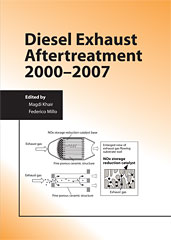Technical Paper
Portable Emissions Measurement for Retrofit Applications – The Beijing Bus Retrofit Experience
2008-06-23
2008-01-1825
In 2005, the United States Environmental Protection Agency (EPA) and Southwest Research Institute (SwRI) embarked on a mission to help the city of Beijing, China, clean its air. Working with the Beijing Environmental Protection Bureau (BEPB), the effort was a pilot diesel retrofit demonstration program involving three basic retrofit technologies to reduce particulate matter (PM). The three basic technologies were the diesel oxidation catalyst (DOC), the flowthrough diesel particulate filter (FT-DPF), and the wallflow diesel particulate filter (WF-DPF). The specific retrofit systems selected for the project were verified through the California Air Resources Board (CARB) or the EPA verification protocol [1]. These technologies are generally verified for PM reductions of 20-40 percent for DOCs, 40-50 percent for the FT-DPF, and 85 percent or more for the high efficiency WF-DPF.


